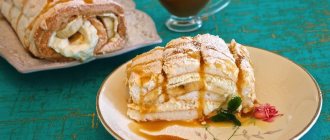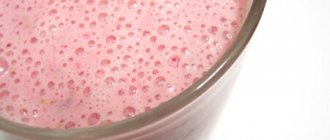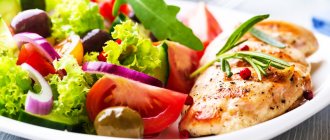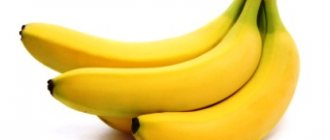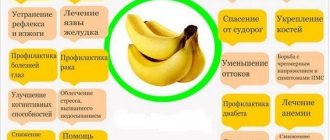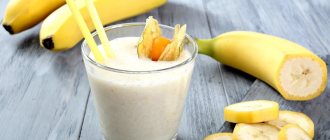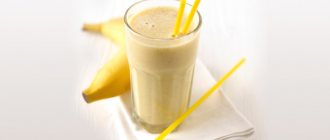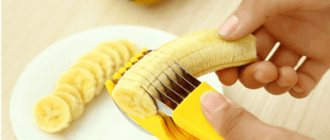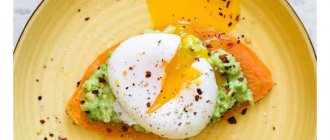If you eat them correctly.
Bananas are the main sports fruit. During two weeks of the Wimbledon tournament, tennis players consume up to 5 tons of bananas (5 pieces per day). Bananas have been popular among cyclists since the 1980s, when the Raleigh Banana team promoted the fruit through its name, bike uniforms and bike design. Bananas are loved by football players and runners - they are easy to open on the go and provide a quick refreshment. And fans - but it’s better to eat bananas than to use them for other purposes.
How to eat bananas for sports performance benefits
The biggest “banana” enthusiast is American professor David Nieman from Appalachian State University. Since at least 2012, it has been studying how eating bananas affects the health of cyclists.
In one early study, Niemann looked for the ideal snack for cyclists—one that would both reduce overtraining-related muscle inflammation and help maintain performance during exercise. His choice fell on bananas - because they have a lot of potassium and vitamin B6, but also have enough carbohydrates.
A team of researchers led by Nieman gathered 14 male cyclists aged 18-45, divided them into two groups and sent them on a 75 km ride. The first group ate a banana before the race, and the second drank an energy drink with the same carbohydrate content. In the next race, they switched places - now the second group ate bananas, and the first drank a drink. After each race, blood tests were taken from all participants and it was found that bananas maintained strength no worse than sports drinks.
In 2021, Nieman conducted a similar study in a slightly different setting, and was able to prove that bananas were even better than sugary drinks because they were better at protecting against inflammation, maintaining strength longer, and facilitating post-workout recovery. In 2021, another group of researchers published preliminary work showing that bananas can not only maintain strength, but also increase physical strength in athletes - although this will require eating two ripe bananas in the morning and evening for a month.
Thanks to all this work, cyclists have become friends with bananas - they try to include them in breakfast and take them with them on long rides. However, it's not just cyclists who love bananas. The British Ministry of Health (NHS) recommends that all athletes, an hour before training, have a light carbohydrate snack - with whole grain bread, porridge or the same banana. The same goes for a workout that takes longer than an hour - your body will appreciate it if you take a break and eat a banana.
True, you shouldn’t exaggerate the effect of bananas. Although bananas contain a lot of potassium, if you eat the fruit, its level in the blood does not rise very much and quite smoothly - in about half an hour to an hour. Therefore, bananas will not be able to relieve you from muscle cramps associated with physical activity.
After classes
A banana after strength training to increase muscle mass is the most ideal solution. Most sports trainers recommend eating this fruit after exercise. Let's look at what a banana does after an active workout:
- The fruit helps to instantly satisfy the feeling of hunger and dull fatigue;
- It charges the body with energy, replenishes wasted energy;
- Eliminates the depletion of muscle tissue, on the contrary, stimulates its growth;
- The high fiber content has a beneficial effect on the body's digestive system, and vitamins and minerals have a complex effect on other processes involved in recovery after heavy exercise;
So, if you are specifically wondering if you can eat a banana after a workout to gain muscle mass, the answer is yes! Immediately after class, feel free to eat 1-2 fruits, and then, within an hour, have a full dinner with food high in protein. This way you will close the protein-carbohydrate window as correctly as possible.
A banana immediately after a workout will also be useful for losing weight, contrary to the belief that it is high in calories. It is better to eat a small fruit that is quickly and safely digested than to eat a bun or a piece of chocolate while feeling hungry. Choose a small banana, eat it immediately after training, and an hour later have dinner with vegetables and boiled meat.
Should you eat bananas after a workout if you are in the cutting phase? It is advisable to give up carbohydrates in favor of a protein shake. However, if the feeling of hunger is too acute, you can afford a small piece of fruit.
Thus, we will call the best time to use this product the period immediately after training, for half an hour.
Many people are interested in whether it is possible to eat a banana immediately after training late in the evening or, for example, before bed? The answer depends on the purpose of the lesson.
After powerful strength training, 2 bananas at night is not excess, but the norm. Yes, they are high in calories, but you haven’t been husking the seeds for the last hour and a half! Believe me, all carbohydrates will go to help the muscles. They will recover and grow.
If you are actively losing weight, it is better to have a night snack with kefir or chicken breast.
What's good about bananas? Vitamins, potassium, fiber and carbohydrates.
Dessert bananas are very similar in nutritional content, so much so that international food databases (like USDA) often don't even list the variety. That is, there is a difference, but no more than a calorie or two, or a fraction of a gram. Therefore, it does not matter which variety of bananas you choose - they will contain approximately the same amount of nutrients. Let's see which ones exactly.
Potassium. Per 100 g (this is slightly less than the weight of one average banana in its peel) there are 358 mg of potassium. According to Russian standards, adults need to receive 2500 mg every day, so this is 14% of the daily value. Getting enough potassium is not only important, but very important because without it, not a single cell in the body can function. Potassium is necessary for the normal regulation of the heartbeat and the proper functioning of muscles and nerves - and without it, protein synthesis and energy production are impossible. So it becomes clear why sports doctors have been eyeing bananas for a long time.
B vitamins: These are eight water-soluble vitamins, of which bananas contain five. But it is especially important for us that 100 g of bananas contain approximately 0.4 mg of vitamin B6. According to Russian standards, adults need 2 mg per day, so bananas contain 20% of the daily value. Vitamin B6 ensures the functioning of many enzymes - proteins that “accelerate” chemical reactions, some of which regulate cell division. So it is important for everyone to get this vitamin with food - but it is especially useful for athletes during weight gain.
Dietary fiber. 100 g of bananas contain 2.6 g of fiber. According to Russian standards, adults need 20 g per day, that is, bananas contain 13% of the daily value. We talked in detail about the beauty of fiber in the article “Is it harmful for athletes to eat bread?”
Carbohydrates. There are 22.8 g of carbohydrates per 100 g of bananas. It's a lot. But it is important to understand that not all of these carbohydrates are sugars. About half is resistant, that is, starch that is not digestible in the intestines. Resistant starch has no benefit in the form of energy, nor harm in the form of extra pounds. It's just a neutral filler that gives the banana volume. It can be absorbed only if this starch is boiled or fried - this is the idea of culinary bananas (and potatoes - the same story with them and their starch).
Bananas ripen in the store and release ethylene gas. The yellower the banana, the sweeter and more harmful it is.
We must immediately make a reservation - the nutritional value of a banana greatly depends on its ripeness. The Russian GOST talks in some detail about how green bananas ripen.
Bananas are picked at the age of 11-12 weeks - that is, when the fruits are already fully formed, but still remain green and hard. They are hard because most of the pulp is resistant starch. While the bananas are traveling in the hold of the ship, they do not ripen, because it is cool in the hold, and the bananas themselves are packaged in boxes and large bags. This is important because when the bananas are unloaded into the warehouse in the store, in the heat they will begin to more actively release ethylene gas. This gas plays the role of a hormone in bananas, which helps them ripen faster.
From a chemist's perspective, ripening is the process of converting resistant starch into easily digestible sugars. In ripe bananas, the total sugar content can reach 16% of the total weight. This means that the glycemic index of ripening bananas gradually increases.
The glycemic index is a rating of foods on a scale from 0 to 100 that shows how quickly these foods raise blood glucose levels. The more glucose there is in a product, the sooner glucose enters the bloodstream - and the higher the glycemic index of the product.
And the more glucose in the blood, the more pancreatic cells will release insulin, a hormone that takes glucose from the blood and transports it into the cells. If a lot of insulin is released at once, the blood glucose level drops sharply, and the brain turns on the feeling of hunger in a panic. As a result, a person who has eaten foods with a high glycemic index will soon want to eat again - even if he actually has more than enough calories.
Unripe green bananas contain little glucose and a lot of starch - so the glycemic index of such bananas is about 30. This is low. But as the banana ripens (that is, turns yellow), the content of easily digestible carbohydrates increases. At the moment when the banana becomes beautiful, fragrant and completely yellow, its glycemic index will increase to 51-58, that is, it will almost double. And this is already quite a lot. This is why people with type 2 diabetes are advised to limit the amount of bananas they eat and not eat them every day.
Thus, ripe—and especially overripe, soft, brown-skinned bananas—stimulate your appetite. So it’s safer to limit yourself to one, maximum two bananas a day - otherwise there is a chance of overeating.
Should you eat bananas before training, how much and why?
Certainly! Before any physical exercise you need a good boost of energy, but where will it come from if you train on an empty stomach? As mentioned earlier, the beneficial elements of bananas are very quickly absorbed by the body, and despite their high calorie content, their moderate consumption and constant training will not allow you to gain weight . Eating two bananas before starting physical activity will increase glycogen levels to the desired level, and this, in turn, will help maintain performance throughout the workout. After this, you will not have a stomach ache during training. Activity and productivity increase, and with them the result.
It wouldn't hurt to eat a banana an hour before your workout.
How to replace bananas if you don't like them
Potassium, vitamins B6 and carbohydrates are not only found in bananas. Even a banana fanatic like Nieman showed in 2015 that pears are almost as good for maintaining strength as bananas (although bananas do work a little better).
In general, athletes can get potassium, carbohydrates and B vitamins not only from bananas, but also from other fruits and vegetables (including dried fruits), whole grain cereals and bread. The only major advantage of bananas over these products is that it is convenient to take with you - and at the same time it contains everything you need for a successful workout.
Bananas may speed up post-workout recovery
Bananas are nutritious and especially rich in water and carbohydrates, which have been shown to help improve physical performance and recovery ().
Helps replenish muscle glycogen stores
Eating carbohydrate-rich foods after exercise releases the hormone insulin, which helps move sugar from the blood into muscle cells, where it is stored as glycogen ().
It also helps muscle cells become more sensitive to insulin, making it easier for them to replenish glycogen stores after exercise ().
Most people can fully replenish muscle glycogen stores before their next workout simply by eating a carbohydrate-rich diet, no matter how quickly they eat a carbohydrate-rich meal after exercise.
However, for those who have less than 24 hours left until their next workout, it is useful to eat foods rich in fast carbohydrates, such as bananas, as soon as possible after exercise, and also in the immediate hours after it ().
This helps speed up the process of muscle glycogen formation, ensuring that you can start your next workout with fully or nearly fully replenished glycogen stores ().
Helps the body use protein more efficiently
Eating carbohydrate-rich foods, such as bananas, along with a source of protein immediately after exercise is often recommended as a way to help your muscles recover more effectively from resistance training.
The idea is that carbohydrates help stimulate your muscles' ability to absorb or use protein, in turn increasing muscle creation and limiting muscle breakdown ().
However, recent research suggests that this combination may not be necessary in most cases. However, more research is still needed in this regard (,,).
Help reduce inflammation
In addition to being rich in carbohydrates, bananas contain a large amount of beneficial compounds such as dopamine and polyphenols (,).
The combination of carbohydrates and these other compounds can help prevent excessive inflammation after exercise. It is believed that this effect may contribute to faster recovery (,,).
The bottom line: Eating a banana after a workout can help increase muscle glycogen production, reduce inflammation, and maybe even help your body use protein more efficiently—all of which can lead to faster recovery.

